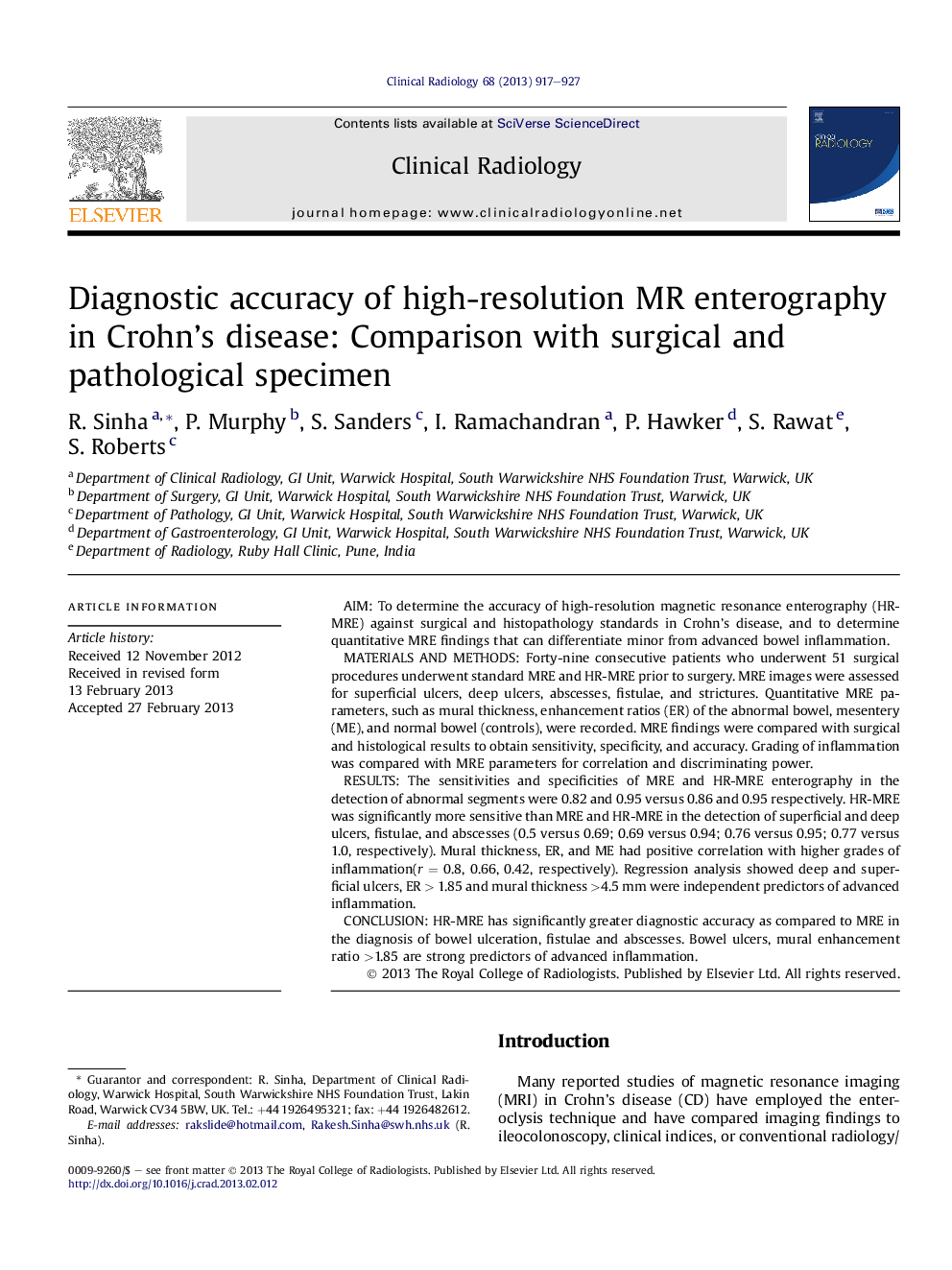| Article ID | Journal | Published Year | Pages | File Type |
|---|---|---|---|---|
| 3982552 | Clinical Radiology | 2013 | 11 Pages |
AimTo determine the accuracy of high-resolution magnetic resonance enterography (HR-MRE) against surgical and histopathology standards in Crohn's disease, and to determine quantitative MRE findings that can differentiate minor from advanced bowel inflammation.Materials and methodsForty-nine consecutive patients who underwent 51 surgical procedures underwent standard MRE and HR-MRE prior to surgery. MRE images were assessed for superficial ulcers, deep ulcers, abscesses, fistulae, and strictures. Quantitative MRE parameters, such as mural thickness, enhancement ratios (ER) of the abnormal bowel, mesentery (ME), and normal bowel (controls), were recorded. MRE findings were compared with surgical and histological results to obtain sensitivity, specificity, and accuracy. Grading of inflammation was compared with MRE parameters for correlation and discriminating power.ResultsThe sensitivities and specificities of MRE and HR-MRE enterography in the detection of abnormal segments were 0.82 and 0.95 versus 0.86 and 0.95 respectively. HR-MRE was significantly more sensitive than MRE and HR-MRE in the detection of superficial and deep ulcers, fistulae, and abscesses (0.5 versus 0.69; 0.69 versus 0.94; 0.76 versus 0.95; 0.77 versus 1.0, respectively). Mural thickness, ER, and ME had positive correlation with higher grades of inflammation(r = 0.8, 0.66, 0.42, respectively). Regression analysis showed deep and superficial ulcers, ER > 1.85 and mural thickness >4.5 mm were independent predictors of advanced inflammation.ConclusionHR-MRE has significantly greater diagnostic accuracy as compared to MRE in the diagnosis of bowel ulceration, fistulae and abscesses. Bowel ulcers, mural enhancement ratio >1.85 are strong predictors of advanced inflammation.
